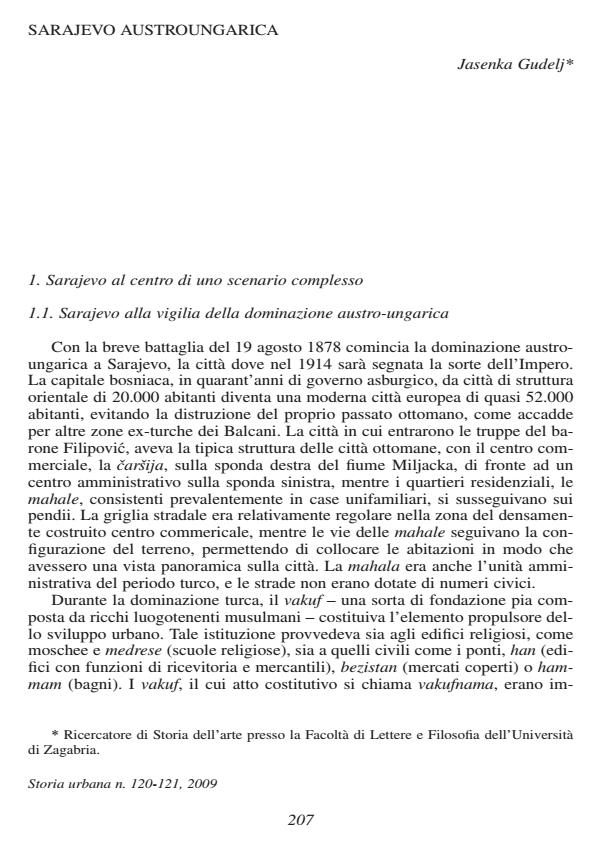Sarajevo austroungarica
Titolo Rivista STORIA URBANA
Autori/Curatori Jasenka Gudelj
Anno di pubblicazione 2009 Fascicolo 2008/120 Lingua Italiano
Numero pagine 22 P. 207-228 Dimensione file 4511 KB
DOI 10.3280/SU2008-120010
Il DOI è il codice a barre della proprietà intellettuale: per saperne di più
clicca qui
Qui sotto puoi vedere in anteprima la prima pagina di questo articolo.
Se questo articolo ti interessa, lo puoi acquistare (e scaricare in formato pdf) seguendo le facili indicazioni per acquistare il download credit. Acquista Download Credits per scaricare questo Articolo in formato PDF

FrancoAngeli è membro della Publishers International Linking Association, Inc (PILA)associazione indipendente e non profit per facilitare (attraverso i servizi tecnologici implementati da CrossRef.org) l’accesso degli studiosi ai contenuti digitali nelle pubblicazioni professionali e scientifiche
Austro-Hungarian Sarajevo - The Austro-Hungarian government of Bosnia (1878-1918) changed Sarajevo profoundly. It grew from an oriental town of 20.000 inhabitants into a modern European city of almost 52.000. This happened while it kept its Ottoman heritage intact. The Ministry of Finance in Vienna was assigned the administration of the province. Its investments in the capital included the regulation of the river and the introduction of the modern networks of water supply, sewers, electric energy and public transportation. Western-style public buildings were built in vacant lots, respecting the pre-existing ownership system. However, there continued to be no general regulative plan. Sarajevo became an active and cosmopolitan city again, but likewise remained very aware of the ethnic and religious differences of its old and new inhabitants who were going through a phase of national self-definition.;
Jasenka Gudelj, Sarajevo austroungarica in "STORIA URBANA " 120/2008, pp 207-228, DOI: 10.3280/SU2008-120010